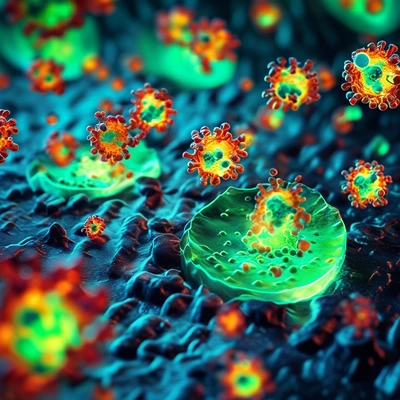Millions of people are familiar with the most common side effect of mRNA vaccines like those for COVID-19: inflammation characterized by soreness, redness, and temporary discomfort. But what if it were possible to redesign these vaccines to minimize or even eliminate this response?
In a recent paper published in Nature Biomedical Engineering, researchers from the University of Pennsylvania have demonstrated that modifying the structure of ionizable lipids—key components in lipid nanoparticles (LNPs) used to deliver mRNA—not only reduces inflammation but also enhances vaccine effectiveness against various diseases, including COVID-19 and cancer.
Nature Biomedical EngineeringThe crucial modification involves adding phenol groups, chemical compounds renowned for their anti-inflammatory properties and found naturally in foods like olive oil.
"By altering the formula of these lipids, we've been able to improve their performance while minimizing adverse effects," says Michael J. Mitchell, Associate Professor of Bioengineering (BE) and senior author of the paper. "It's a win-win situation."
Until now, ionizable lipids in LNPs—one of four lipid types in these particles and arguably the most important—have primarily been synthesized through chemical reactions that combine two components into one new molecule.
"Since these methods have been so effective, there hasn't been much incentive to seek alternatives," says Ninqiang Gong, a former postdoctoral fellow in Mitchell's lab and co-first author of the paper.
By revisiting earlier chemistry research, the team discovered an alternative strategy: the Mannich reaction, identified by a German chemist over a century ago. This approach combines three precursors instead of two, allowing for greater molecular variability.
"We successfully created hundreds of novel lipids," says Gong.
Exploring these new lipid structures led to the discovery that incorporating phenol groups—a hydrogen and oxygen combination attached to a carbon ring—significantly reduced inflammation in LNPs.
"It's like discovering the secret ingredient," says Gong. "The phenol group not only lessens side effects linked with LNPs but also enhances their effectiveness."
Past studies have found that compounds containing phenols combat inflammation by countering the harmful impacts of free radicals—molecules having unpaired electrons, capable of disrupting the body's chemistry.
Excessive free radicals or insufficient antioxidants lead to "oxidative stress," which can degrade proteins, damage genetic material and even kill cells.
By analyzing various oxidative stress markers, researchers compared inflammation caused by LNPs formulated using different lipids.
"The most effective LNP we developed with a phenol-containing ionizable lipid—produced via the Mannich reaction—demonstrated reduced inflammation," says Emily Han, a Bioengineering doctoral student and co-author of the paper.
Encouraged by these findings on inflamation reduction, researchers tested whether their new lipids could improve vaccine performance. In multiple experiments, C-a16 LNPs—incorporating the most anti-inflammatory lipid—outperformed those used in current mRNA technologies.
"Reducing oxidative stress makes it easier for LNPs to function effectively," says Dongyoon Kim, a postdoctoral fellow at Mitchell Lab and co-first author of the paper.
C-a16 LNPs not only provided more extended effects but also boosted the efficacy of gene-editing tools like CRISPR and cancer vaccine potency.
The effectiveness of these new C-a16 lipids was tested using animal models. Researchers first delivered a bioluminescent gene into cells, which made mice 'glow.' The brightness in subjects injected with the C-a16 LNPs was about fifteen times greater than those who received Onpattro, an FDA-approved drug for treating hereditary transthyretin amyloidosis (hATTR), a rare genetic liver disease.
Moreover, these new lipids enhanced gene-editing tools like CRISPR, making them doubly effective in addressing the faulty gene causing hATTR within a mouse model compared to current delivery methods.
In cancer treatment applications, remarkable results were observed. In an animal model of melanoma, an mRNA cancer therapy delivered through C-a16 lipids reduced tumor size three times more effectively than the current LNP form used in COVID-19 vaccines. This also enhanced cancer-fighting T cells by helping them identify and destroy tumor cells better, with less oxidative stress.
Finally, when evaluated for preparing mRNA COVID-19 vaccines, C-a16 lipid formulations induced a five times stronger immune response compared to standard methods in animal models.
"By causing fewer disruptions to cellular processes, the phenol-containing lipids can potentially enhance various LNP applications," says Kim.
Looking forward, while addressing immediate opportunities for reducing side effects with this novel technique, researchers are excited about exploring how overlooked chemical processes like the Mannich reaction could lead to further innovations in LNPs.
"We applied a century-old chemical process and found it led to substantial improvements in advanced medical treatments," says Mitchell. "It's thrilling to contemplate what other rediscoveries might be possible."


